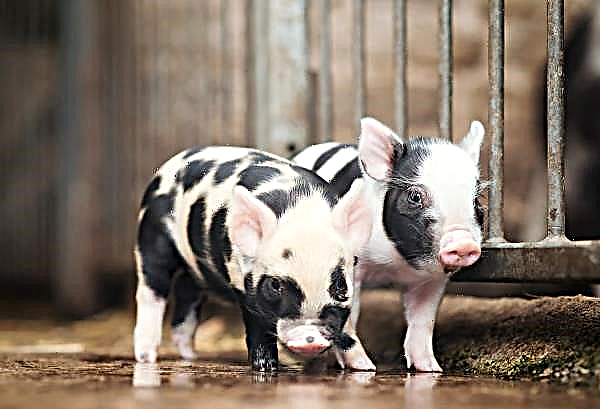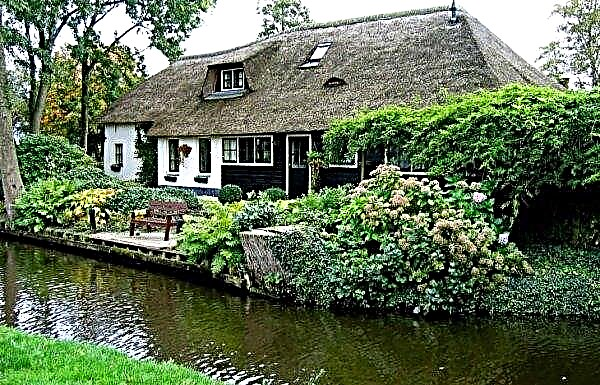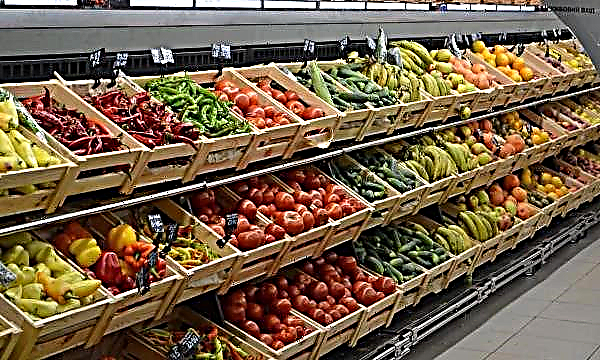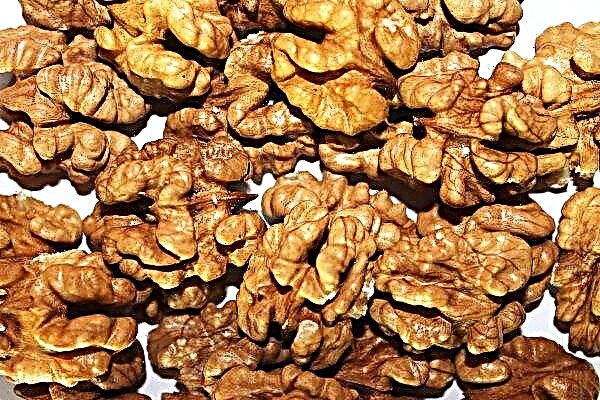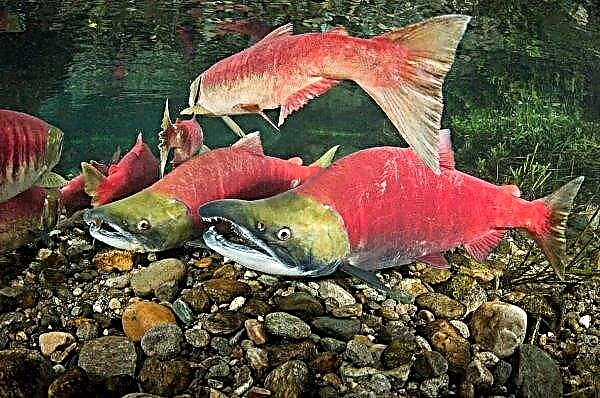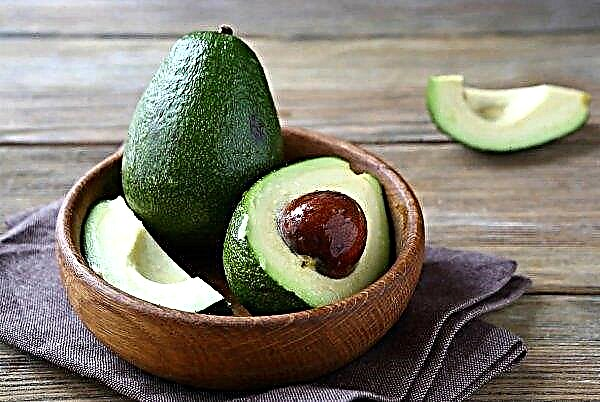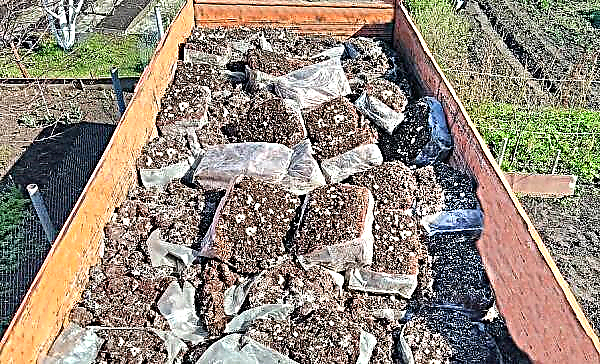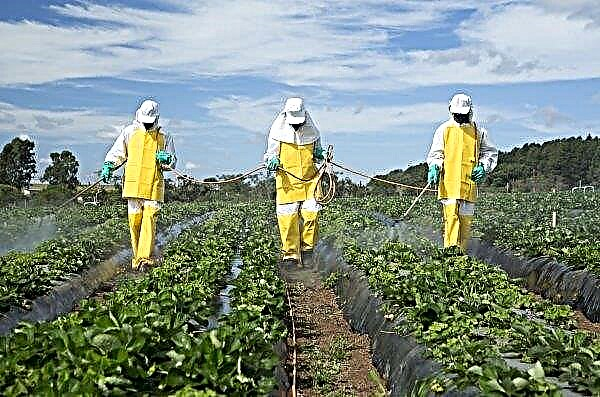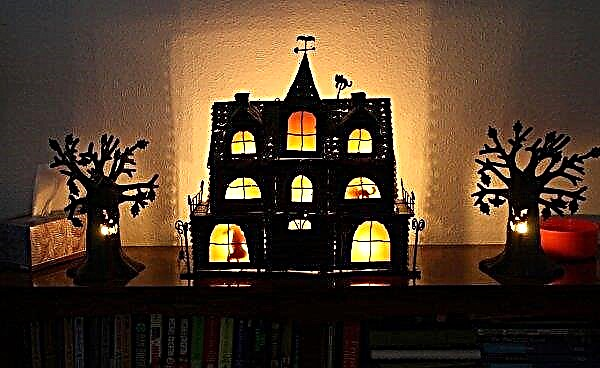The shell of eggs is as familiar as the white color of milk. Without a shell, a chicken egg looks unnatural, not to mention the transportation problems that arise during this. The reasons for this phenomenon and how to prevent it will be discussed in the article.
Why do chickens lay eggs without shells?
There are several reasons for this unpleasant phenomenon:
- deficiency of vitamins and minerals in the diet of chickens;
- improper conditions of detention, insufficient time for laying hens in the open;
- busting with the use of additives that stimulate the egg production of birds, which leads to depletion of the body;
- infectious diseases;
- genetic malfunctions;
- hormonal disorders.

Did you know? Although eggs with white and brown shells are completely identical in content, the brown shell, being denser, retains the freshness of the egg for a little longer.
Diet
Inadequate, unbalanced nutrition, its excess or deficiency, as well as a stale condition - all this can cause the appearance of shell-free eggs in chickens.
Wet mash
This type of feed is prepared by the owners of the chickens on their own. It usually consists of:
- boiled and mashed potatoes;
- chopped vegetables;
- wheat bran;
- various cereals;
- finely chopped greens;
- meal or flakes.
 For the preparation of a wet stirrer, use whey or standing water. Since this product is not intended for long-term storage, its volume should correspond to the ability of chickens to eat it at a time. Otherwise, the remnants of uneaten food can become acidic, and its subsequent eating by chickens can lead to poisoning and malfunctioning of the digestive system of the bird, which, in turn, will result in the absence of an egg shell.
For the preparation of a wet stirrer, use whey or standing water. Since this product is not intended for long-term storage, its volume should correspond to the ability of chickens to eat it at a time. Otherwise, the remnants of uneaten food can become acidic, and its subsequent eating by chickens can lead to poisoning and malfunctioning of the digestive system of the bird, which, in turn, will result in the absence of an egg shell.
Dry food
It is a compound feed manufactured industrially. Its small fraction contributes to the active saturation of chickens in small portions. This is done to prevent overeating, which usually leads to a decrease in egg production and problems in the formation of eggshells.
Important! The daily portion of dry food should not exceed 130 g on average.
Mixed feed
When preparing mixed feed, a third of the feed is replaced by grain. In winter, the proportion of grain increases. In this case, do not forget about protein supplements to strengthen the chicken body and prevent problems with the formation of a full shell.
Additives
Since calcium is one of the most important macroelements that directly affects the formation of high-quality eggshells, it must enter the chicken body in sufficient quantities. One of the simplest, cheapest and most reliable sources of calcium for chickens in a rural farmyard is the same egg shell. It is well dried, crushed and added to wet or dry food several times a week. But one should not overdo it, since excess calcium is not much better than its deficiency and can lead to a deterioration in chicken appetite and a decrease in egg production.
In addition to calcium, the body of chickens also requires other micro and macro elements, as well as vitamins, which in winter may be missed. Therefore, feed should be supplemented with cabbage, pumpkin and carrots. Many nutrients necessary for the formation of a full shell are contained in the hay, which must be present in the chicken coop in the form of bunches suspended at a height of 40 cm from the floor.
Infectious diseases
Infectious diseases often have a negative effect on the formation of a quality egg shell.
Egg Drop Syndrome
Symptoms of this disease are manifested in:
- a sharp decrease in egg production;
- the irregular shape of the eggs and their discoloration;
- softening the shell;
- the total predominance of unfertilized eggs.

Infectious bronchitis
This disease of the respiratory system of birds is accompanied by:
- noisy breathing;
- permanently open beak;
- a sharp decrease in appetite;
- lethargy;
- craving for heat sources;
- purulent eye discharge.
Hormonal system diseases
The formation and development of an egg is directly affected by the hormonal level in the bird's body. With prolonged stresses, its failure occurs, leading eventually to the formation of eggs, devoid of shells. If chickens have a complete diet, the condition of their bones does not cause anxiety, and in the absence of infectious diseases, hormonal failure in the chicken body should be suspected.
If chickens have a complete diet, the condition of their bones does not cause anxiety, and in the absence of infectious diseases, hormonal failure in the chicken body should be suspected.
Important! The exact cause of the changes in the bird's body can only be determined by a specialist.
Unacceptable conditions
Often the problems encountered in chickens with the production of shellless eggs are associated with the vicious approach of their owners to the maintenance of laying hens. They are not given enough time to stay in the open air, which is why the chicken body is deprived of the opportunity to independently synthesize vitamin D, which is essential for the full absorption of calcium by the body. At the same time, the immune system of the bird is reduced and its skeleton is significantly affected.
What to do with the problem at home
If chicken is found to have infectious diseases, the bird is treated:
- antiviral agent "Anfluron", which is given orally or administered intramuscularly for a month in doses corresponding to the form of the disease;
- vaccine "Primer";
- “Iodinol”, also called blue iodine;
- vitamin C contained in green feed, hay and needles;
- vitamin D, which is formed in the chicken body under the influence of sunlight, and also received there in the winter with fish oil.

How to prevent a problem?
First of all, for this it is necessary to provide chickens with a full, balanced diet, eliminate all sources of stressful situations and optimize conditions. Poultry must have access to crushed shells, chalk or stove wood ash. Chickens should be vaccinated and live in disinfected chicken coops or cages, without any contact with geese and ducks, which often act as sources of infectious diseases. The bird should also be treated with anthelmintic agents, since parasitic worms can cause the appearance of shell-free eggs.
How to handle the premises
Disinfect the premises that contain chickens at least once every two months. To do this, the bird should be removed from the chicken coop, and the disinfecting person needs to wear a jumpsuit, a respirator and tight seals. Litter from all surfaces is easily removed with water with the addition of apple cider vinegar. After the surfaces have dried, they should be coated with quicklime. Surfaces instead of acetic solution can be treated with a solution of potassium permanganate. In a small concentration, it can also be added to drinking water. A good effect on disinfection is obtained from fumigating the room with an iodine swab.
After the surfaces have dried, they should be coated with quicklime. Surfaces instead of acetic solution can be treated with a solution of potassium permanganate. In a small concentration, it can also be added to drinking water. A good effect on disinfection is obtained from fumigating the room with an iodine swab.
In the event of chicken disease, the chicken coop should be immediately disinfected with a solution of:
- iodine preparations;
- 6% lime with a chlorine content;
- 3% hot soda;
- Lugol's solution.
Did you know? The color of the yolk in the chicken egg indicates the quality of the feed used to treat the bird. If the yolk is pale, it means that the chicken in its feed was clearly not enough vitamins and other useful substances.
Video: Treatment of the house with iodine monochloride
Other preventative measures
In order for a chicken to lay an egg with an appropriate shell, it is necessary to observe not very burdensome, but extremely necessary rules:
- Timely and general vaccination of all chickens should be carried out.
- Provide the bird with balanced, nutrient-rich feeds.
- Strictly adhere to sanitary standards for poultry.
- Immediately proceed to the treatment of diseased chickens or to their destruction in hopeless cases.
- Timely carry out anthelmintic treatment of the entire bird population.
- Equip the chicken room with ultraviolet lamps that can destroy most harmful viral strains.
- Protect chickens from rodents and predators.
- Disinfect the chicken coop once every two months.
 If the hens rush sluggishly and at the same time produce eggs not in the shell, but in the film, this should be taken as a clear distress signal coming from the chicken coop. But it can be prevented if the necessary rules for keeping birds are observed.
If the hens rush sluggishly and at the same time produce eggs not in the shell, but in the film, this should be taken as a clear distress signal coming from the chicken coop. But it can be prevented if the necessary rules for keeping birds are observed.

